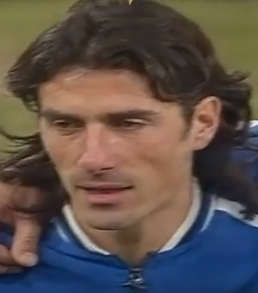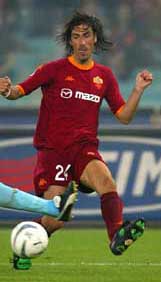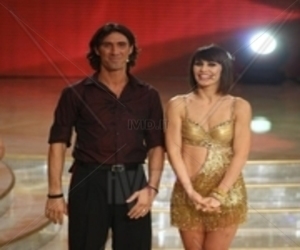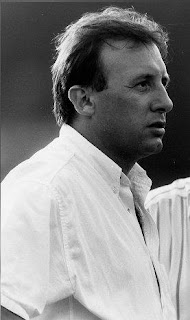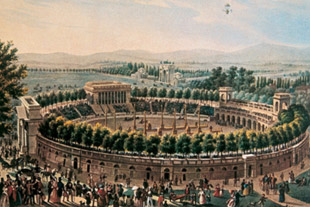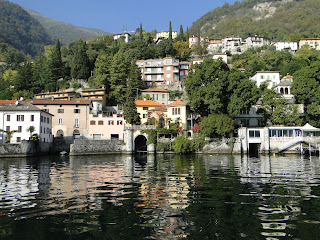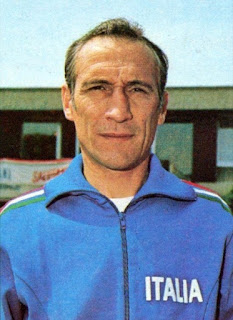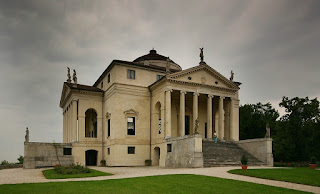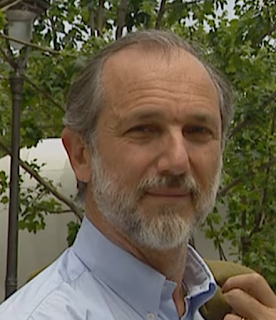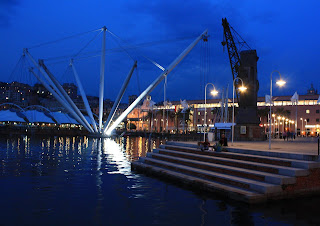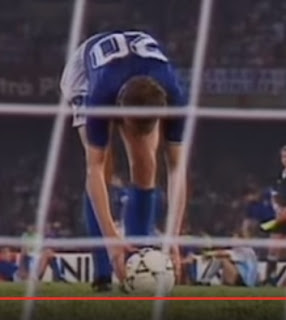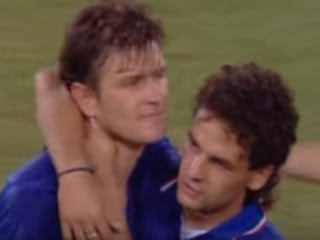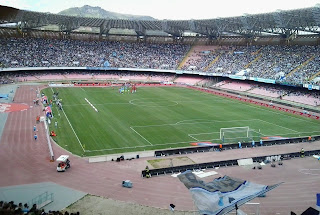Striker one of stars of 2006 triumph in Germany
 |
| Luca Toni with the World Cup in 2006. The hand gesture is the one he habitually made after scoring a goal |
Toni scored twice in Italy’s 3-0 victory over Ukraine in the quarter-finals before starting as the Azzurri’s main striker in both the semi-final triumph over the hosts and the final against France, in which they eventually prevailed on penalties. Toni hit the bar with one header and saw another disallowed for offside in the final.
The goals were among 16 he scored in 47 appearances for the national team but it was his remarkable club career that makes him stand out in the history of Italian football.
A muscular 6ft 4ins in height and hardly the most mobile of forwards, he was never seen as a great player, more an old-fashioned centre forward of the kind rarely seen in today’s game.
Yet between his debut for his local club, Modena, in 1994 and his retirement in 2016 following his final season with Hellas Verona, Toni found the net 322 times in club football, which makes him the fourth most prolific goalscorer among all Italian players. Most times, he celebrated by shaking his hand near his right ear, which he once explained began as meaning 'listen up - I just scored a goal!'
 |
| Toni in the colours of Fiorentina, for whom he scored 31 goals in the 2005-06 season |
Of his contemporaries, only Alessandro del Piero (346) scored more, while historically he doffs his cap only to Silvio Piola (364) and the Internazionale legend Giuseppe Meazza (338).
In a nomadic career that saw him wear the colours of 13 different Italian clubs - plus one in Germany and one in Dubai - Toni was twice the capocannoniere - top scorer - in Serie A, hitting 31 goals for Fiorentina in 2005-06, which was the biggest individual tally in Italy’s top division for 47 years, and then sharing the honour with Inter’s Mauro Icardi some nine years later, in the 2014-15 season, when he scored 22 for Hellas Verona.
Toni did not make his Serie A debut until he was 23, by which time he had already played for five clubs in six seasons in the lower divisions. He made his first start in the top flight for Vicenza and subsequently played alongside Baggio and Pep Guardiola at Brescia.
It was with Palermo in Serie B that Toni made his first real impact as a goalscorer. He scored 30 times as the Sicilian club won promotion in 2004 to end an absence of more than 30 years from Serie A and a further 20 the following season as the Rosanero qualified for the UEFA Cup for the first time in their history.
 |
| Toni was the No 9 for the Azzurri in the 2006 World Cup final |
Toni showed great loyalty to the fallen club, offering to stay with them even after they were ordered to start the following season in Serie B, a sentence commuted on appeal to a 15-points deduction in Serie A. When he left at the end of the 2007 season it was only because an approach from Bayern Munich in Germany allowed him to keep his pledge of not joining a rival Italian club.
His first season in the Bundesliga was a huge success, his 24 goals helping Bayern win the title. He also scored both goals as Bayern beat Borussia Dortmund 2-1 to add the German Cup and complete the double. Despite an ankle injury keeping him out for a long spell, he still managed 14 goals in his second season.
After falling out with manager Louis Van Gaal midway through the 2009-10 season, Toni was on the move again, spending brief spells with Roma, Genoa, Juventus, Al Nasr in Dubai and Fiorentina again. It looked like his career was drawing to a close but then newly-promoted Verona took a gamble by offering him a one-year contract to play on beyond his 37th birthday.
It paid off handsomely as Toni enjoyed a renaissance, rediscovering his old deadliness in the penalty area to score 20 goals in the 2013-14 season and 22 in the 2014-15 campaign, by the end of which he was 38, when his 22 goals made him the oldest capocannoniere in the history of Serie A.
 |
| Toni (left) and his teammate Miroslav Klose in the Bayern Munich team in 2007-08 |
After retirement, Toni took courses with a view to remaining at Verona as director of football but left in 2017 and has more recently worked as a pundit.
Married to the model Maria Cecchetto, with whom he has two children, he was back on a football pitch earlier this month in a star-studded testimonial for the great Azzurri midfielder Andrea Pirlo, getting on the scoresheet as usual as the match ended 7-7.
 |
| The Castle of Montecuccolo at Pavullo nel Frignano |
Pavullo nel Frignano, where Luca Toni was born, is a town of around 17,000 inhabitants in the Modenese Apennines. It is home to the medieval Castle of Montecuccolo, birthplace of the 17th century condottiero - mercenary - Raimondo Montecuccoli. Pavullo sadly suffered extensive damage during the Second World War because of its proximity to the German defences on Gothic Line.
| The Arena di Verona hosted a football match in the early days of the local football team, Hellas Verona |
Toni’s final team, Hellas Verona, acquired its name after it was founded in 1903 by a group of students from the prestigious local lyceum, where a classics professor put forward the name Hellas, which is the Greek equivalent of the Latin word patria, meaning homeland. The city was largely indifferent towards football at first but the Veronese began to take more of an interest after the club staged a game against their local rivals Bentegodi in the city's Roman amphitheatre, now famous as the Arena di Verona, attracting national media attention.
Also on this day:
1805: Napoleon Bonaparte crowned King of Italy
1955: Formula One motor racing champion Alberto Ascari tragically dies in a crash at Monza
Home
